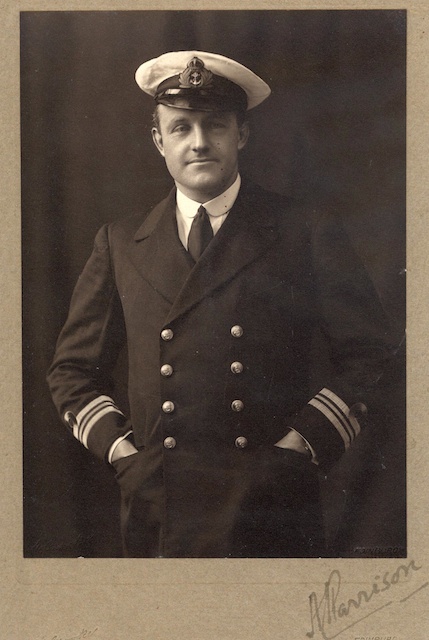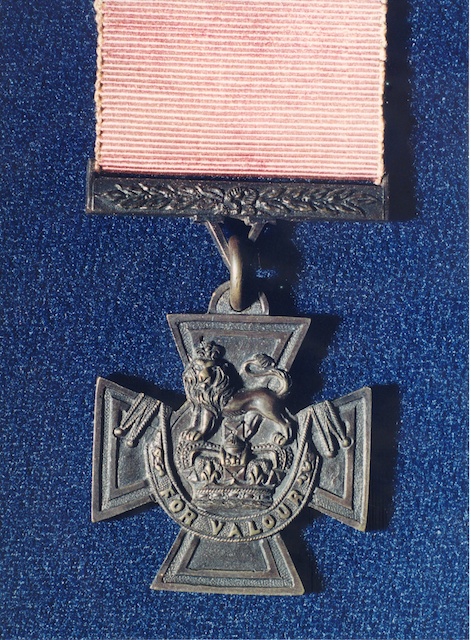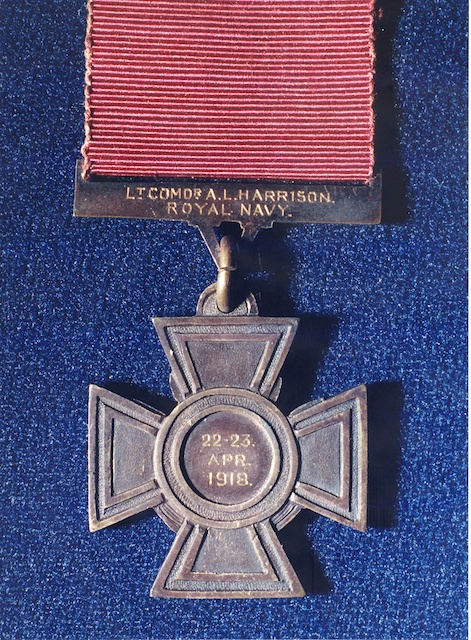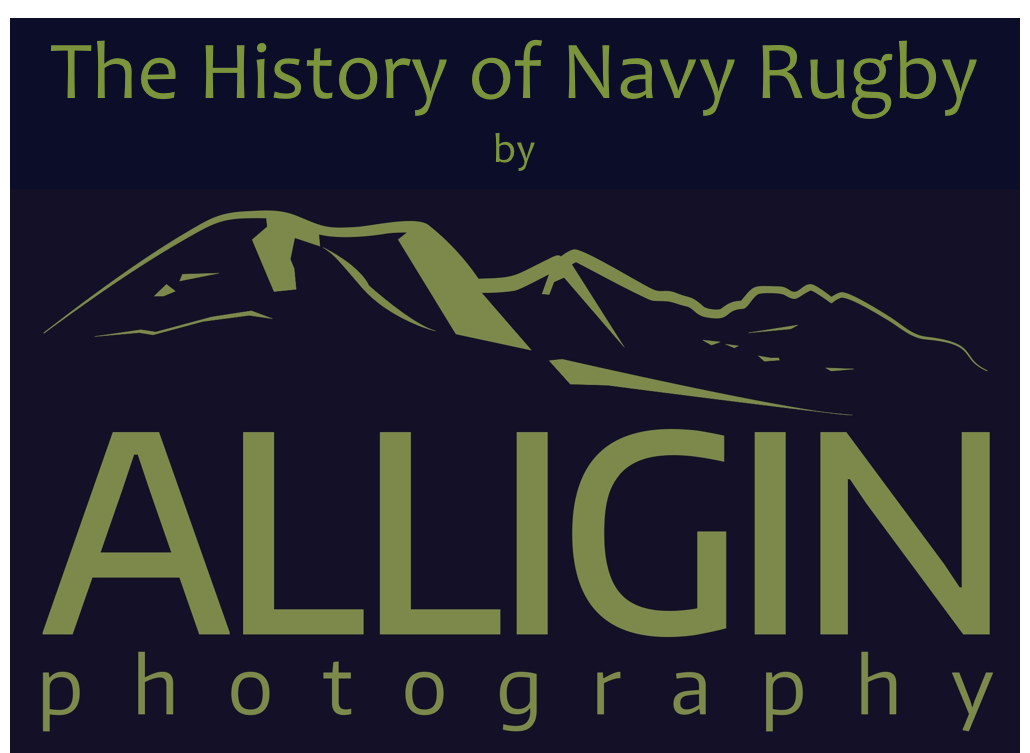A.L. Harrison

Born 3 February 1886, Torquay, Devon
Died 23 April 1918, Zeebrugge, Netherlands
1 caps
Played against the Army in 1914
Inter Service Record
Played 1 Won 0 Drew 0 Lost 1
Inter Service Titles 0
1914 Royal Navy 14 Army 26
Clubs
US Portsmouth RFC
Rosslyn Park
The term one cap wonder is sometimes used quite disparagingly. Often by those who haven’t even achieve the singular honour. However in Navy Rugby tems it is most apt for Lieutenant Commander Arthur Leyland Harrison Royal Navy who won is single cap in 1914 to go with his two England caps of the same year. In 1918 he was part of the Zeebrugge Raid during which he eventually took command, showed immense bravery and was posthumously awarded Britain’s highest award for gallantry, the Victoria Cross. He remains the only English rugby international to hold the VC and was truly a one cap wonder.
He made his debut for England on 14 February 1914 in the home match against Ireland alongside his Navy Rugby colleague and fellow forward Harold Harrison. England won the match 17-12. Arthur was also on the winning side when he won his second and final cap for England away to France in Colombes. This time the margin was a convincing 39-13. Harrison’s contribution helped England win the Grand Slam that year. In the two matches that he didn’t play England won by a single appoint against both Wales and Scotland.
It would be hard in this short entry to possibly do Arthur Harrison’s legacy justice. However the book by Gavin Mortimer the Fields of Glory gives a very good account along with the exploits of that most famous of wings from the Royal Air Force Cyril Lowe. I recommend it as an excellent read. Another book that gives the most compelling account of the Zeebrugge Raid and an equally absorbing insight in to Harrison the rugby player is The Final Whistle by Stephen Cooper, again a book I thoroughly recommend.
In 2013, Stuart Lancaster introduced an award named after Harrsion for the England team. The announcement was made in the Times newspaper on 1 Nov 2013.
AL Harrison VC – RFU Award as announced in the Times
Articles were published by Huw Richard’s ESPN and in the Daily Telegraph to mark 100 years since his England debut.
Finally if you find yourself walking on Roundham Head at Paignton (a magnificent walk with excellent views) keep a look out for Arthur Harrion’s memorial. It may be a little over grown and tatty but it marks the life of one of Navy Rugby’s and England’s greatest.
Victoria Cross


Lieutenant Commander Arthur Leyland Harrison Royal Navy is the only England International rugby player to have been awarded the Victoria Cross. His medal is held by Britannia Royal Naval College Dartmouth. He was awarded this highest award for gallantry after the Zeebrugge Raid on the night on 22 April 1918. There was a second Navy Rugby connection with the Zeebrugge raid. It was first proposed by Vice Admiral Sir John Jellicoe who was Navy Rugby President from 1910-1912. Arthur Harrison’s citation, that appeared on the 17th March 1919 in the London Gazette reads as follows:
For most conspicuous gallantry at Zeebrugge on the night of the 22nd – 23rd April 1918.
This officer was in immediate command of the Naval Storming Parties embarked on “Vindictive”. Immediately before coming alongside the Mole, Lieut-Commander Harrison was struck on the head by a fragment of a shell which broke his jaw and knocked him senseless. Recovering consciousness he proceeded on to the Mole and took over command of his party who were attacking the seaward end of the Mole. The silencing of the guns on the Mole head was of the first importance, and though in a position fully exposed to the enemy’s machine-gun fire Lieut-Command Harrison gathered his men together and led them to the attack. He was killed at the head of his men, all of whom were either killed or wounded.
Lieut-Commander Harrison, though already serverely wounded and undoubtedly in great pain, displayed indomitable resolution and courage of the highest order in pressing his attack, knowing as he did that any delay in silencing the guns might jeopardise the main object of the expedition, i.e., the blocking of the Zeebrugge-Bruges Canal.
The Zeebrugge Raids were a bloody affair with many dead are far more injured. The Vindictive was commanded by Captain Alfred Carpenter. Some years after the war he published his own account of the raid. It is clear from these memoirs that Arthur Harrison had made a significant impression upon him:
‘Harrison’s charge down the narrow gangway of death was a worthy finale to the large number of charges which, as a forward of the first rank, he had led down many a rugby football ground. He had “played the game” to the end.’
The Rugby History Society
One of the most complete articles I have found on Arthur Harrison was written by Adrian Hunter for the Rugby History Society. He has kindly given permission for his article to be reproduced in full.
Arthur Leyland Harrison was born on February 3rd 1886 in Torquay, Devon, the son of Lieutenant Colonel A J Harrison of the Royal Fusiliers and his wife Adelaide . After spending his early school years at Dover College the youngHarrison embarked on a Naval career commencing training as a cadet officer in 1902. He was commissioned as a Sub Lieutenant four years later in 1906, with promotion to full Lieutenant following two years later in 1908.
From an early age Harrison was captured by the allure of the rugby field as well as that of his blossoming naval career, although in many cases the two intertwined. A resolute forward Harrison was a stalwart member of the Hampshire branch of the United Services from the time of his joining the fleet as a qualified officer in 1906 until the outbreak of war in 1914. He also played for the Hampshire county side for the last two years of this period from 1912. His growing reputation on the field during the immediate pre war years as a county player soon brought him to the attention of theEngland selectors’ and Harrison was picked for a debut cap against Ireland in a match held at Twickenham on February 14th 1914. Played in front of the King and the Prime Minister Ireland started the game in a characteristic frenzy, soon leading by seven points. England played a more conservative game and were able to score enough points against a tiring Irish side to take the match by seventeen points to twelve. Harrison certainly played his part in the victory, along with his namesake H G Harrison from the Army. In a match report from the Times it was said that “the English forwards stiffened in the scrummage by the two Harrisons did better than against Wales ”, a clear reference to England ’s previous match that had only just been won by ten points to nine.
This debut cap for England was soon followed by another for the Royal Navy against the Army in their annual match held on 7th March 1914 at the Queens Club and again played in front of the King who was this time accompanied byPrince Albert . Despite poor weather on the day, rain combined with a not uncommon fog for which the Queens club was well known was soon overcome by the quality of play. The match was also aided by the referee, Mr Potter-Irwin, who played a large amount of advantage rather than awarding penalties allowing an open game to emerge. The game itself was largely balanced between the Navies half backs and the Armies pack, whose weight and vigor eventually proved too much for the lighter Navy forwards although they played like terriers. Although down by eighteen points to three at half time twice in the second half the Navy managed to claw themselves back to within seven points of the Army before finally succumbing by twenty six points to fourteen, a final score that belied the closeness of the game.
The following month, on April 13th, Harrison was again selected for England . This time he travelled to Paris to take on the French at Stade de Colombes. England , as was often their wont at this time, started slowly allowing the French to score within five minutes of the kick off. It was not until the second half that England finally took control of the match outclassing the French in an emphatic if still less than expected thirteen points to thirty nine victory. Harrison ’s international season, and indeed career, was now over. The match in France had secured England a second consecutive grand slam, a feat that Harrison should have been justifiably proud to have assisted in.
With the outbreak of war Harrison , as a serving Naval officer, was almost immediately engaged in active service with the fleet. During the course of the war he was to participate in the majority of the more important naval battles of the conflict. This included action at the battles of Heliogoland Bight in 1914, Dogger Bank in 1915 and Jutland in 1916. For his service at Jutland Harrison was mentioned in dispatches In September 1916 and this was rapidly followed by promotion to Lieutenant Commander in October of that year. Despite this distinguished record it is for the raid on Zeebrugge in 1918 which was the defining moment in Harrison ’s naval career.
The raid was originally proposed in 1917 by Sir John Jellicoe, but was not officially approved until February 1918 when Sir Roger Keyes created a plan that would block Zeebrugge. This would make it impossible for the Germans to use the port for their submarines which posed a clear threat to allied shipping, particularly in the English Channel . The raid was carried out on April 23rd 1918, led by HMS Vindictive on board which Harrison had command of the Naval storming parties who were to disable the German shore batteries. The raid started badly with unexpected winds making the smoke screen planned to cover the Vindictive ineffective. Under heavy fire the Vindictive was forced to moor in the wrong position which to all intents and purposes disabled her guns, and effectively deprived the storming parties of their artillery support. Just before this Harrison was hit by a shell fragment which both broke his jaw as well as knocking him unconscious. When he came to Harrison immediately went ashore to take charge of his men, fully aware of the importance of his part of the mission. Without the German shore guns silenced the whole plan to block the canal would be in jeopardy. With this in mind, and even though severely wounded, he marshaled his men to attack. During the following action all members of Harrison ’s party were either killed or wounded, with Harrison himself killed in action after achieving only some of his aims. Although the three blocking ships Thetis, Intrepid and Iphigenia did scuttle themselves in the port, it was not in the positions previously planned. The result of this was that the raid achieved only partial success with the Zeebrugge-Bruges canal being blocked for only a few days before the German’s cleared a route around the blockships that their submarines could navigate at high water. The raid itself was proclaimed a great success by the allies despite its failure to reach its long term objectives and the five hundred casualties sustained during the action. Eight Victoria Crosses, Britain ’s highest award for valor in action, were awarded as a result of the night’s fighting. For his courage and resolution in battle Lieutenant Commander Arthur Leyland Harrison RN was posthumously awarded one of them.
Sources
“The Complete Who’s Who of England Rugby Union Internationals”, R Maule, Breedon 1992
The Times Online Digital Archive
The London Gazette Online
Wikepedia
www.firstworldwar.com
Article sourced and researched by Geraint Ashton Jones using articles from London Gazette, The Rugby History Society (Adrian Hunter), Minutes of Royal Navy Rugby Union.
